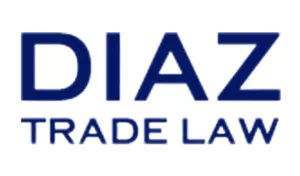Diaz Trade Law is enthusiastic to announce that our article "USDA & CBP Combat Non-Compliant WPM" was published by Bloomberg Law! Below is the article reproduced with permission for your reading pleasure.
The destructive effects of foreign pests found in contaminated solid wood packaging materials have led to an enforcement focused inter-agency initiative between the U.S. Department of Agriculture and U.S. Customs and Border Protection. WPMis any packaging apparatus made of wood, which include pallets, crating, packing blocks, drums, cases, load board, pallet collars, skids, etc. Importers of shipments containing non-compliant WPM are subject to potential hefty CBP penalties upon their first violation.
CBP additionally mandates the exportation of the non-compliant WPM (and typically the associated cargo as well) within 72 hours. In rare instances, CBP has allowed for the exportation of only the non-compliant WPM and the importation of the merchandise. In Oct. 2019, CBP revised its mitigating penalties guidelines for violations of the WPM regulations, below discusses what to know about WPM violations and best practices.
Take the Emerald Ash Borer for example: despite measuring only half an inch, these insects ravished North American forestry, destroyed over 50 million trees, and caused millions of dollars in damages. The beetle, which arrived at the U.S. inside imports from China, is only one of thousands of similarly invasive species that reside in commonly used WPM.
Policy Shift
In 2004, USDA published a final rule to combat the risk of introducing foreign plant pests to the U.S. This rule adopted the 2002 International Plant Protection Convention international standards for WPM. The main purpose of the IPPC is to secure coordinated, effective action by the treaty's signatory countries to prevent and to control the introduction and spread of plants pests and plant products that are detrimental to our ecosystems. While the rule was codified under USDA regulations, 7 CFR 319.40, it was rarely enforced.
Then, in 2017, the trade industry began experiencing the wrath of CBP's enforcement power. CBP informed importers of its intent to issue penalties for WPM via Cargo Systems Messaging Service #17-000609. In the message, CBP highlighted that preventing the introduction of exotic pests is critical, and alerted importers that "responsible parties with a documented WPM violation may be issued a penalty. " CBP previously allowed five yearly violations for importers, but now routinely issues penalties for first violations.
Characteristics
WPM must comply with the preventative measures set forth in the IPPC's International Standards of Phytosanitary Measures (ISPM 15) and in 7 C.F.R. § 319.40-3(b)(2); mandating that WPM be properly treated through heat or fumigation, and then accurately marked with a stamp, signaling its compliance. There are 3 categories of violations of 7 C.F.R. § 319.40-3: unmarked WPM, inappropriately marked WPM , and infested WPM .
Enforcement and Penalty Mitigation
Currently, imports containing WPM are subject to heightened scrutiny and frequently targeted for inspection. CBP issues penalties against importers for infested WPM and for inconspicuous markings. Frequently markings have bled as a result of being stored outdoors. Importers are exposed to penalties in addition to exportation cost, per 19 U.S.C. §l595a(b) or 19 U.S.C. §1592. CBP primarily issues penalties under 19 U.S.C. § l 595(a)(b), where the penalty amount equals the domestic value of the merchandise.
CBP takes a strict liability approach in issuing the penalties, with no room for penalty cancellation. However, importers may avail themselves of mitigating factors that substantially reduce the penalty amount. Typical results from CBP have been mitigation of 10% of the total penalty amount.
In Oct. 2019, CBP revised its mitigation guidelines for violations of the WPM regulations. These changes are retroactive to Nov. l, 2017. The updated mitigation guidelines provide for more opportunity for penalty reduction. For example, penalties assessed for first violations may be mitigated to 1% of the value of the assessed penalty depending on the presence of mitigating and aggravating factors.
The updated mitigating guidelines now instruct CBP to consider evidence of immediate remedial action to prevent further WPM violations, evidence of proper treatment, evidence that the WPM was marked but marking was illegible, whether the percentage of the shipment involved in the violation was small, and whether the violations happened close in temporal proximity.
Best Practices
CBP's zealous enforcement of WPM signals the government's true goal: transitioning from WPM to plastic CBP has advised importers of their responsibility to work with their suppliers to ensure that WPM comply with relevant regulations. Additional tips for importers to ensure supplier accountability include:
- Ensure the supplier is knowledgeable of WPM requirements
- Request supplier's standard operating procedure for WPM compliance
- Request images and inspections of WPM prior to exportation to the U.S.
- Upon discovery of a non-compliant WPM, ensure cooperation with CBP/the Animal and Plant Health Inspection Service, export within 72 hours, and develop an immediate remedial action plan
USDA & CBP Combat Non-Compliant WPM
Originally published in Bloomberg Law
The content of this article is intended to provide a general guide to the subject matter. Specialist advice should be sought about your specific circumstances.


